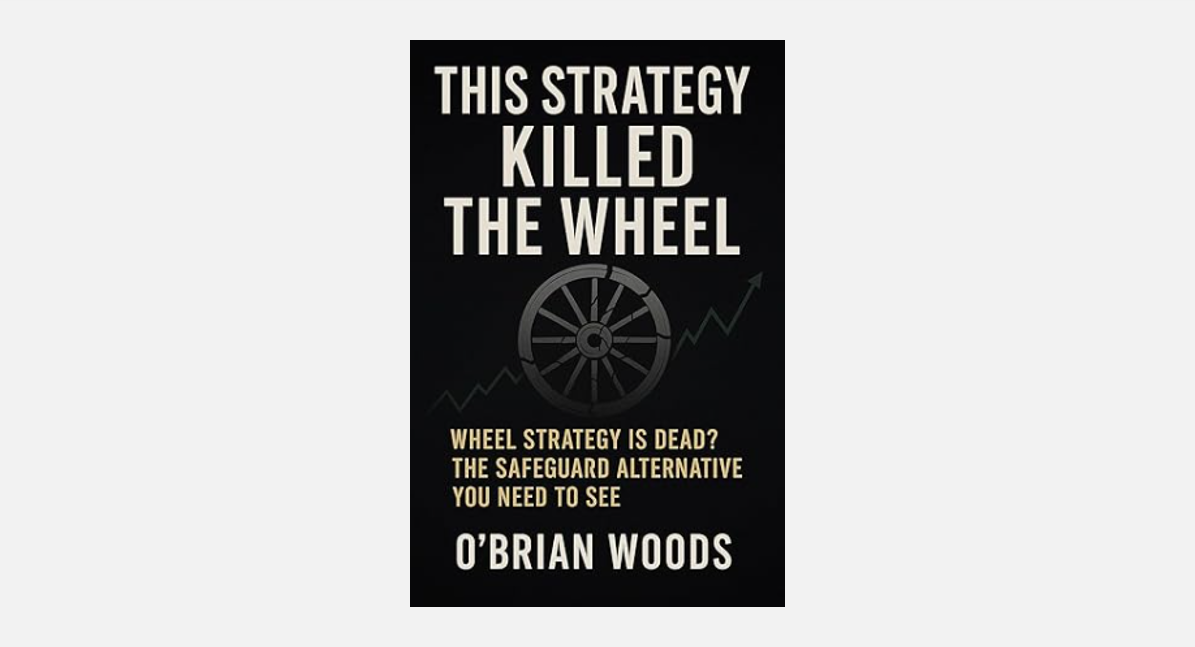DORIAN TRADER
Why Stop Loss Fails: The Case for Options-Based Protection
The Illusion of Safety
Every trader has lived through the same scene at least once. You enter a trade with conviction. You do your research, check the charts, maybe even layer on some indicators. But you’re not reckless – you’re disciplined. So you set a stop loss. That neat little line on your chart is supposed to protect you. If the market turns against you, you’ll be out before the damage becomes catastrophic.
It feels safe. Responsible. Professional. And then it happens.

Price drifts down. Your stop triggers. Your broker closes you out. You take a manageable loss. But within hours – or sometimes minutes – the market reverses. The very position you abandoned starts running in the direction you predicted. Except you’re not in it. You’ve been stopped out.
Instead of protecting you, your stop loss just cost you money. Worse, it took away your seat at the table.
This cycle repeats itself over and over for retail traders. It breeds frustration, regret, and distrust. Stop losses promise safety, but what they often deliver is disappointment. The tool designed to limit damage ends up limiting opportunity.
And that’s the real problem: stop losses are reactive, blunt, and short-sighted. They’re not true protection. They’re a band-aid, not a strategy.
So what’s the alternative? That’s where options-based protection comes in. Specifically: the collar strategy and its evolution, the Safeguard Strategy.
Before we dig into why collars work where stop losses fail, let’s unpack the three big reasons stop losses don’t deliver what traders think they will.

📚 Want to dive deeper into why the Wheel Strategy is no longer enough and what traders can use instead?
Check out O’Brian Woods’ book “This Strategy Killed the Wheel: The Safeguard Alternative You Need to See”. It explains in detail how the Safeguard Strategy provides the protection, adaptability, and upside potential that the Wheel lacks.
The Stop Loss Mirage
Stop losses look simple enough. Pick a number, set the order, and let automation handle the rest. But under real market conditions, they rarely work as intended.
1. Volatility and Whipsaws
Markets don’t move in straight lines. They chop, grind, and spike. Intraday volatility can stop you out of a perfectly valid trade even when your thesis is correct.
Imagine buying 100 shares of a stock at $100 with a stop loss at $95. The stock dips to $94.90, your stop triggers, and you’re out – just before it rebounds to $110 over the next two weeks. You took a $500 loss when you should have made a $1,000 profit.
This isn’t a rare fluke. It’s how modern markets behave. With algorithmic trading, high-frequency noise, and leveraged ETFs, whipsaws are the rule, not the exception. Stop losses leave you exposed to the randomness of short-term moves.
2. Psychological Traps
Stop losses create an illusion of discipline, but they often backfire emotionally.
- Fear of being stopped out makes traders set stops too wide, increasing risk.
- Fear of missing out tempts them to jump back in after a reversal, often at worse prices.
- Frustration from repeated whipsaws leads to abandoning stop losses altogether, which leaves them unprotected.
Instead of providing clarity, stop losses often amplify the emotional rollercoaster of trading.
3. Opportunity Cost
The biggest cost of stop losses isn’t the losses – they’re usually small. It’s the missed opportunities.
Once your stop triggers, you’re out. If the market recovers, you’re not there to benefit. You’ve paid for downside protection by sacrificing upside potential. That’s not protection. That’s self-sabotage.
Options-Based Protection: A Smarter Safety Net
If stop losses are blunt tools, options are precision instruments. They allow traders to define risk, cap losses, and still participate in recovery.
The simplest and most effective option-based hedge for long positions is the collar strategy.
The Collar Strategy
A collar combines three elements:
| 1. Own 100 shares (your bullish foundation). |
| 2. Buy a protective put (your insurance policy). |
| 3. Sell a covered call (your income source, which helps pay for the put). |
Here’s how it works:
- The put guarantees that if the stock falls below your strike, your losses stop there. It’s like setting a floor under your portfolio.
- The call caps your upside, but it pays you premium that offsets the cost of the put. It’s like adding a roof over your house – limiting unlimited gains but protecting against storms.
The beauty of the collar is that it locks in a defined risk/reward box. You know your maximum loss and your maximum gain. But unlike a stop loss, you’re never kicked out of the position. If the market rebounds, you rebound with it.
Safeguard Strategy: The Next Step
At Dorian Trader, we’ve taken the collar further by building it into the Safeguard Strategy. Think of it as an upgraded version of the Wheel strategy.
- It’s bullish, but hedged.
- It sells premium (through covered calls) to generate consistent income.
- It uses protective puts to prevent catastrophic downside.
The result is a system that allows traders to stay in the market through volatility while knowing exactly where their risks stop. No stop loss can do that.
Containment, Not Catastrophe
Think of your portfolio like a house:

With a stop loss, when water starts seeping in, you’re forced to evacuate the entire building. You lock in the damage and lose access to your home – even if the rain stops and the sun comes back out.
–
With a collar, the damage is contained. One room may flood, but the rest of the house is intact. You clean it up, move on, and keep living inside.
–
This containment matters. It turns catastrophic losses into manageable setbacks. It transforms panic into patience. And it allows you to keep your long-term positions intact instead of constantly getting chopped up by short-term volatility.
The Psychological Edge
Options-based protection isn’t just about math. It’s about mindset.
When you know your maximum loss is capped, you stop trading from fear. You can stick to your plan, let trades develop, and avoid knee-jerk reactions.
That psychological edge is priceless. It allows traders to think strategically instead of emotionally. It shifts your focus from surviving each day to building long-term consistency.
Lessons From Market History
The S&P 500 has one of the most reliable track records in finance: it has recovered from every single downturn in history. Not 90%. Not 99%. 100%.
That means if you can stay in the game long enough, the odds of recovery are overwhelmingly in your favor.
Stop losses prevent you from staying in. They eject you during the drawdowns – just before the recovery begins. Collars and safeguard strategies keep you invested, protected, and positioned to benefit when the rebound comes.
This isn’t theory. It’s history. From the crashes of 1987, 2000, 2008, and 2020, the same lesson repeats: the market punishes those who panic out, and rewards those who stay protected and patient.
Case Study: Stop Loss vs Collar
Let’s compare two traders with $10,000 invested in SPY at $400.
| Trader A uses a stop loss at 5%. | Price dips to $380, stop triggers, position closed. |
| SPY rebounds to $420. Trader A is out. Loss: -$500. | |
| Trader B uses a collar (long 100 shares, long put at $380, short call at $420). | Price dips to $380, put kicks in, losses stop there. |
| SPY rebounds to $420, call caps upside, but Trader B still makes profit + premium from the call. | |
| Net outcome: defined risk, defined gain, no panic exit. |
The difference is night and day. Trader A lost money and missed opportunity. Trader B contained risk, stayed in the trade, and walked away with profit.
Why Stop Loss Fails: The Core Truth
Stop losses fail because they are static: once triggered, you’re out, your position is gone, and you lose the chance to benefit if the market recovers.
Options, by contrast, are dynamic. They allow you to hedge, adjust, and adapt as conditions change. They don’t force you to pick between safety and opportunity. They let you have both.
Why Stop Loss Fails: The Core Truth
Stop losses are marketed as protection, but they’re not. They’re shortcuts. They simplify risk management at the cost of long-term success.
Options-based protection – collars, safeguard strategies, structured hedges – offer something stop losses never can:
- Defined risk.
- Continued opportunity.
- Psychological clarity.
- Historical resilience.
That’s why smart traders don’t rely on stop losses. They build real protection into their portfolios with options.
